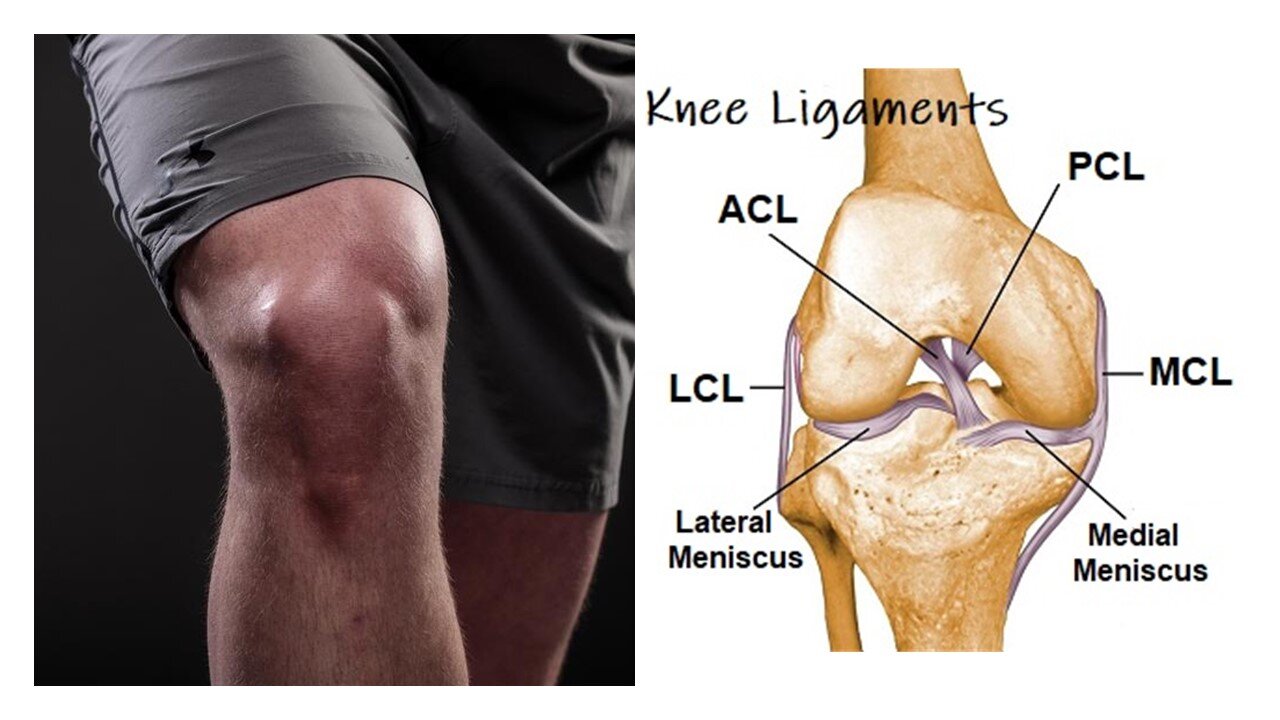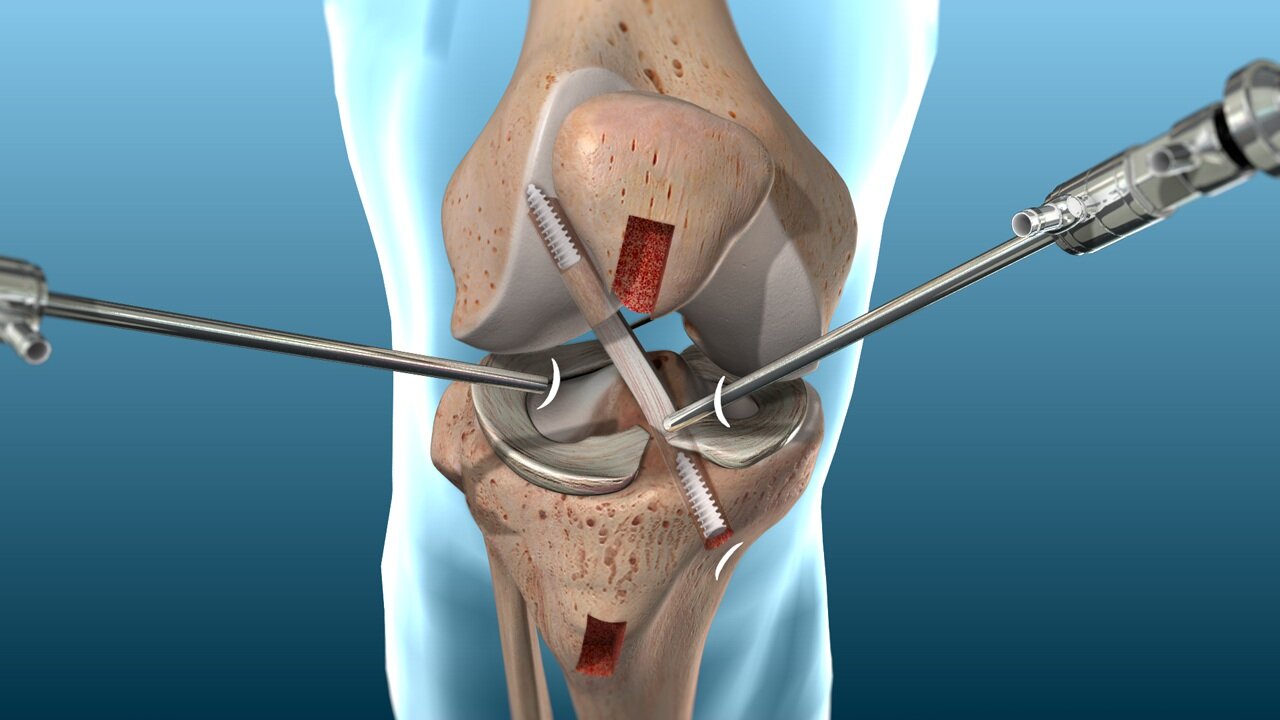Knee Ligament Surgeries
Knee ligament repair is a treatment for a complete tear of a knee ligament that results in instability in the knee. People with a torn knee ligament may be unable to do normal activities that involve twisting or turning at the knee. The knee may buckle or “give-way.” If medical treatments are not satisfactory, ligament repair surgery may be an effective treatment.
The surgery to correct a torn knee ligament involves replacing the ligament with a piece of healthy tendon. A tendon from the kneecap or hamstring, for example, is grafted into place to hold the knee joint together. The tendon graft may come from the person (autograft) or from an organ donor (allograft).
At Aptiva Health, we offer same-day and walk-in appointments for knee injuries and conditions to evaluate, diagnose, and make the appropriate referral for additional treatment based upon your specific knee injury or condition. We treat these conditions in our General Medicine, Orthopedics, Sports Medicine, Pain Management, and Physical Therapy departments.
ACL Repair & Reconstruction surgeries
The anterior cruciate ligament (ACL) is located toward the front of the knee. It is the most common ligament to be injured. The ACL is often stretched and/or torn during a sudden twisting motion (when the feet stay planted one way, but the knees turn the other way). Skiing, basketball, and football are sports that have a higher risk of ACL injuries.
Types of ACL Injuries
ACL injuries are diagnosed through clinical examination and MRI, and can be classified by the amount of damage to the ligament (partial or complete disruption). Injury to the ACL is usually a complete disruption, classifying it as a Grade III complete tear.
Grade I Sprain - There is some stretching and micro-tearing of the ligament, but the ligament is intact and the joint remains stable. These injuries rarely require surgery.
Grade II Sprain (Partial Disruption) - There is some tearing and separation of the ligament fibers and the ligament is partially disrupted. The joint is moderately unstable. Depending on the activity level of the patient and the degree of instability, these tears may or may not require surgery.
Grade III Sprain (Complete Disruption) - There is total rupture of the ligament fibers. The ligament is completely disrupted and the joint is unstable. Surgery is usually recommended in young or athletic people who engage in sports that involve cutting or pivoting.
ACL Repair Versus Reconstruction
A surgical repair of the ACL refers to affixing the injured ligament back to the tibia or femur from which it has been torn. In rare cases, the ligament may have pulled off of the bone and may have taken a small piece of bone with it. In such cases, the surgeon can suture the ligament or screw the bone back down and restore some, if not all, of the ACL's function.
However, a torn ACL is rarely able to be repaired because during most tears, the ligament tears at its midpoint, like a frayed rope. Over time, the ligament may become completely disabled. Even if partially intact, a torn ACL sustains tissue damage and repair of the original ligament has shown to provide relatively poor functional results.
Reconstruction of the ACL involves rebuilding it using a new ligament. The surgeon creates a soft tissue substitute for the ligament, called a graft, that re-establishes knee stability and provides a scaffold. Miraculously, the patient’s body will recognize this graft scaffold, populate it with living cells and permanently attach it in place. Over a relatively short time (about four to six months), this new ligament will take on the appearance and function of the normal ACL. The functional results of ACL reconstruction are predictably excellent and the overwhelming majority of patients are able to get back to the same or higher degree of athletic activity without pain or instability.
PCL Repair Surgery
The posterior cruciate ligament (PCL) is located toward the back of the knee. It is also a common knee ligament to be injured. However, the PCL injury usually happens with sudden, direct impact, such as in a car accident or during a football tackle. PCL tears make up less than 20% of injuries to knee ligaments. Injuries that tear the PCL often damage some of the other ligaments or cartilage in the knee, as well. In some cases, the ligament can also break loose a piece of underlying bone.
An injury to the PCL can cause mild to severe damage. Doctors classify PCL injuries in these groups:
Grade I: The PCL has a partial tear.
Grade II: The ligament is partially torn and is looser than in Grade I.
Grade III: The ligament is completely torn and the knee becomes unstable.
Grade IV: The PCL is damaged along with another ligament in the knee.
PCL problems can be acute or chronic. Acute PCL problems are due to a sudden injury. Chronic PCL problems involve an injury that develops over time.
PCL repair surgery
Small incisions will be made around the knee. Tools will be passed through the incisions. If enough of the ligament is intact, the damaged PCL may be reattached to the bone. Any tears in the ligament will be repaired.
If the PCL needs to be reconstructed, a tendon from another part of the body or a donor will be used. The remains of the damaged ligament will be cleaned away from the knee joint. Small incisions will be made in the thighbone and shinbone. The new tendon will be threaded through the incisions and held down with screws or staples. The incisions will be closed with stitches and covered with bandages.
MCL Repair Surgery
The medial collateral ligament (MCL) is located on the inner side of the knee. It is injured more often than the lateral collateral ligament (LCL), which is on the outer side of the knee. Stretch and tear injuries to the collateral ligaments are usually caused by a blow to the outer side of the knee, such as when playing hockey or football.
The right MCL treatment plan will depend on the severity of your tear. Grade I and Grade II tears can heal on their own within a few days to a few weeks as long as you get plenty of rest.
Since Grade III MCL injuries are complete tears, the ligament is unable to heal itself and surgery is needed. Surgery may also be needed if there is any grade of an MCL tear along with other ligament issues.
A nonsurgical treatment plan will include some or all of the following:
Applying ice to reduce swelling
Taking anti-inflammatory medication to reduce pain and swelling
Using an elastic bandage or brace to compress the knee
Walking with crutches to keep the weight off the injured knee
Limiting activities that could cause reinjury or disrupt healing
Physical therapy to regain strength
During MCL surgery, the orthopedic surgeon will make small incisions in your knee and insert an arthroscope, which is a small tube-shaped instrument. Methods for reattaching or reconstructing the torn ligament can vary. Options include using a portion of the patellar tendon (which connects the tibia and the kneecap) or the hamstring tendon (from the back of the thigh). Tendon grafts can come from the patient or an organ donor.
lcl repair surgery
The lateral collateral ligament (LCL) does not heal as well on its own compared to other knee ligaments, such as the medial collateral ligament (MCL). When an LCL tear fails to adequately heal, or if the tear is severe, surgery to repair or reconstruct the LCL may be recommended.
Repair surgery is most often done on two types of LCL tears.
The first is when the damage is located where the ligament attaches to the thighbone (femur) or shinbone (tibia). The surgeon will reattach the torn ligament to the bone using large sutures (strong medical thread), screws, or staples; LCL repair is typically an open procedure because the LCL is located outside the knee joint and cannot be visualized with an arthroscope (a tiny camera placed in the knee joint).
The other type of repair surgery is performed when the LCL is torn in the middle. In these cases, the surgeon will use strong and durable surgical thread to sew the torn ends back together. This surgery is only appropriate if the tear is relatively recent (within a few weeks from when the injury occurred).













